What's New
Displaying results 2441 - 2450 of 4052
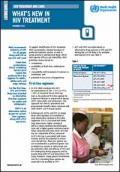
Resource | Fact Sheets,
WHO recommends initiation of ART for all people living with HIV at any CD4 cell count Fixed dose combinations (FDCs) containing TDF/XTC/EFV remain the preferred first line regimen for adults, adolescents and older children For the first time, DTG and EFV400 have been included as alternative first line regimens for adults and adolescents. DRV/r is an alternative option as part of secondline regimens, along with LPV/r and ATV/r.
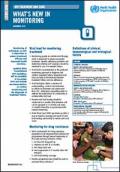
Resource | Fact Sheets,
Monitoring of individuals on ART is important to ensure treatment efficacy and improved health outcomes. Updated WHO Consolidated ARV Guidelines will be available in December 2015 and include recommendations on routine monitoring and the diagnosis of treatment failure.
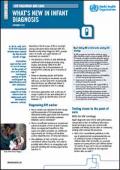
Resource | Fact Sheets,
Mortality in the first year of life is very high among untreated infants infected with HIV, therefore early infant diagnosis (EID), prompt return of results and rapid initiation of treatment are essential.
In 2014, only 50% of all HIV-exposed infants were tested by the second month of age.
Innovative approaches such as use of assays at the point-of care and adding virological testing at birth could speed up identification and ART initiation. Operational research to fully inform how to implement such innovations remains critical.
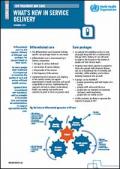
Resource | Fact Sheets,
Differentiated care for HIV requires delivery of different care packages for people based on their needs.
As more people start treatment it is important to maximise the quality of care and ensure efficient health services. Updated WHO Consolidated ARV Guidelines will be available in December 2015 and include recommendations to support appropriate quality care.
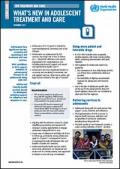
Resource | Fact Sheets,
Adolescents face significant barriers accessing and remaining in HIV treatment and care services.
WHO guidelines in 2015 support initiation of antiretroviral therapy for all adolescents living with HIV. Adolescent friendly health services should be developed, including support for adherence and retention in care.
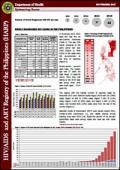
Resource | Fact Sheets,
In November 2015, there were 627 new HIV Ab sero-positive individuals. This was 27% higher compared to the same period last year (492). Most (92%) of the cases were still asymptomatic at the time of reporting.
Ninety-seven percent were male. The median age was 27 years old (age range: 13 years-62 years). More than half belong to the 25-34 year age group while 30% were youth aged 15-24 years old.

Resource | Publications,
An estimated total of 717 million young people aged 15 to 24 live in the Asia-Pacific region, comprising 60 per cent of the world's youth. In Asia and Pacific, HIV epidemics are concentrated within the MSM and transgender communities, and younger counterparts of these communities are more vulnerable. 95 percent of all new infections among young people occur among the most at risk adolescent populations. According to UNAIDS Data Hub, in 2013, 610,000 young people (15-24) are living with HIV in Asia-Pacific.
In response to the rising epidemic, UNAIDS 90-90-90 Strategy, specifically discusses the importance of taking specific steps to increase HIV testing among young people, expand treatment options for adolescents, adapt health services to adolescents’ needs, mobilize social support, and empower young people. The game changers introduced for Asia and Pacific in the strategy includes scaling up prevention programmes for men who have sex with men and transgender people, including condoms and PrEP, especially for us – the younger generation.
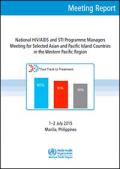
Resource | Publications,
Over the last two years, countries have made progress in scaling up access to HIV prevention, diagnosis, and treatment. However continued late diagnosis of HIV infection and the unacceptably high proportion of people living with HIV not linked to care result in a low proportion of PLHIV who achieve viral suppression.
National AIDS and STI programme managers met in Manila in 2015 to agree on concrete actions towards reaching the 90-90-90 targets and related prevention and stigma targets by 2020.

Resource | Publications,
The aim of the program is to create enabling and empowering environment in the selected countries to enhance the engagement of young key populations in the Global Fund processes at country level, with following specific objectives: (i) To synthesize and generate strategic information in relation to HIV and young people to inform the National Strategic Plan review and Investment Cases; (ii) Ensure youth partners have the skills and knowledge to influence the country dialogue for adequately resourced HIV responses for young people; and (iii) Ensure programmes funded through the NFM targeting young people are designed and implemented in full partnership with young people to ensure programmes are effective.
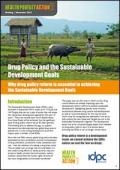
Resource | Publications,
This paper sets out the ways in which current drug control efforts are already impacting upon the development sector’s efforts to achieve sustainable development, highlighting specific areas of policy incoherence between drug control and development, as well as recommendations for the way forward, which must be recognised and addressed if we are to fully achieve the new Goals and Targets set out in the Sustainable Development Agenda. The development sector has so far remained largely absent from debates on drug policy reform, but if it is serious about achieving the SDGs it can no longer remain silent.





